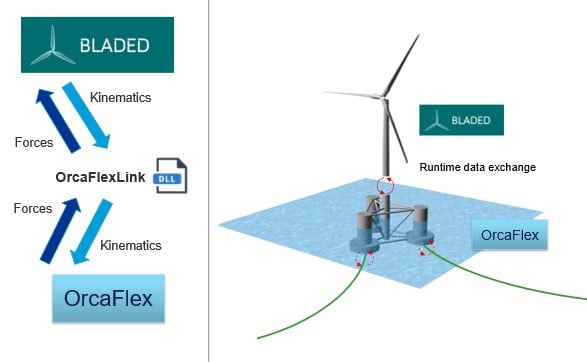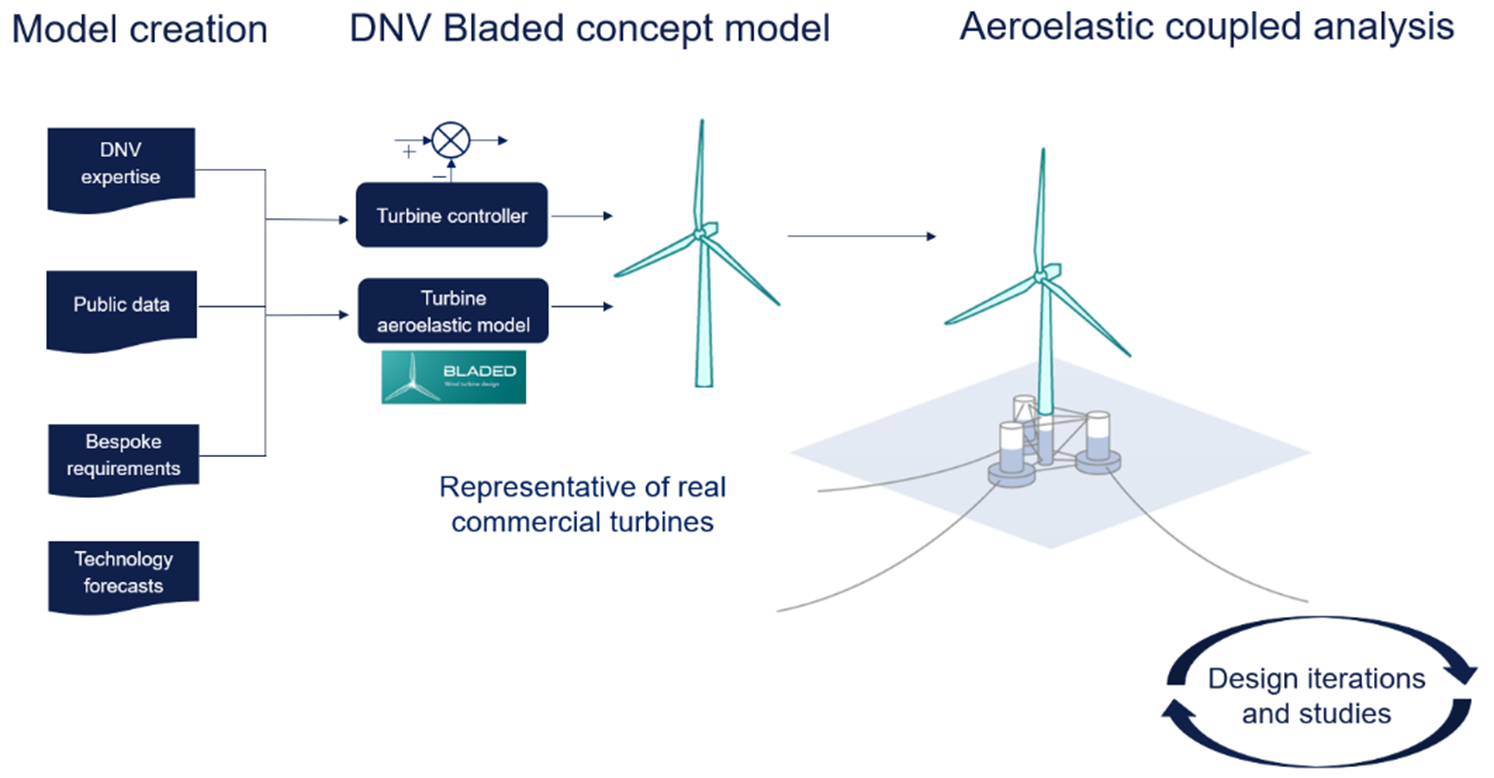Streamline floating wind design collaboration with the Bladed-OrcaFlex co-simulation link and DNV concept turbine models
Cut costs, reduce uncertainty, and boost competitiveness in floating wind design. The Bladed-OrcaFlex co-simulation link and DNV’s concept turbine models give foundation designers the edge they need for optimized, collaborative, and cost-effective designs.
In the rapidly evolving field of floating offshore wind design, numerical analysis is essential from initial design concept stages through to detailed design and certification. The behaviour of floating wind systems depends on the complex interactions between various sub-systems such as moorings, foundations, wind turbine and the controller. These interactions must be captured in a fully coupled analysis to determine the merits and viability of different configurations.
Challenge: Integration across diverse tools and stakeholders
Floating wind design projects involve multiple stakeholders, each with their own area of expertise and preferred tools.
Foundation designers excel in understanding the structural design and marine loading environment on the foundation, as well as the interaction with the mooring system. Often the design is initialised in specialised simulation tools like OrcaFlex or SIMA, whose strengths lie in the modelling of floating platforms and moorings.
Meanwhile, wind turbine OEMs understand the complex turbine dynamics and control system, relying on aeroelastic models within Bladed – the leading tool which was used for designing around 70% of turbines installed in 2023.
In early design stages, the sub-system designers use their preferred tools in isolation with simplified representation of the rest of the system. This introduces uncertainties when integrating these sub-systems later in the design process, potentially compromising the overall project. What is the best approach later in the design process when sub-system integration and coupled analysis is the priority?
Solution: All design stakeholders using one toolchain
One approach is to try to model the whole system in a single tool. This can be convenient for the design stakeholders familiar with the chosen tool. However, this often results in simplification of part of the model thereby reducing accuracy and it requires a complex verification study to be undertaken by the various stakeholders.
An alternative is to use a co-simulation approach, such as between Bladed and OrcaFlex. This enables each design stakeholder to re-use their existing models and tools in one combined workflow with the other stakeholders. There are some great advantages to this approach such as:
- Benefit from the complementary capabilities of OrcaFlex and Bladed
- Save time on code-to-code verification studies
- Reduce duplication of work between turbine and foundation designers
- The foundation designer may use the wind turbine OEM model directly

The Bladed-Orcaflex co-simulation link has been verified, with findings published in a conference paper. While the paper is behind a paywall, we are happy to provide a copy upon request – simply contact us.
Interested in learning more about the link between Bladed and OrcaFlex? Visit our Bladed documentation page to explore this feature in detail.
Empowering foundation designers with DNV concept turbine models
During the concept design phase, foundation designers often lack access to high fidelity turbine models, and instead use open-source reference models such as the IEA 15 MW turbine. Even though these models are useful, they introduce uncertainties in the foundation design at early stages that can have significant impacts in the competitiveness of the solution when used with a real turbine.
Later at the FEED design phase, the wind turbine OEM is often not able to share their full aeroelastic model with the foundation designer due to concerns over intellectual property. It is therefore typically the wind turbine OEM who performs the overall coupled analysis, and they only have time for a few iterations. This can leave the foundation designer having to use open-source reference models to iterate their design, that do not represent the actual turbine for the planned project. The use of these simplified turbine models means that some contingencies to the design are required, reducing the competitive edge of the project.
To bridge this gap, DNV has developed turbine concept models that reflect the most common wind turbines currently on the market and anticipated in the coming years. These models, built on over 30 years of wind turbine design and analysis expertise, allows foundation designers to have an accurate full system model that can be used in concept design, or at the system integration stage of floating wind projects. This reduces uncertainty in the final design, and improves the cost effectiveness and competitiveness of the foundation.
Get in touch with us to discover how DNV’s concept turbine models can enhance your project’s competitiveness.

